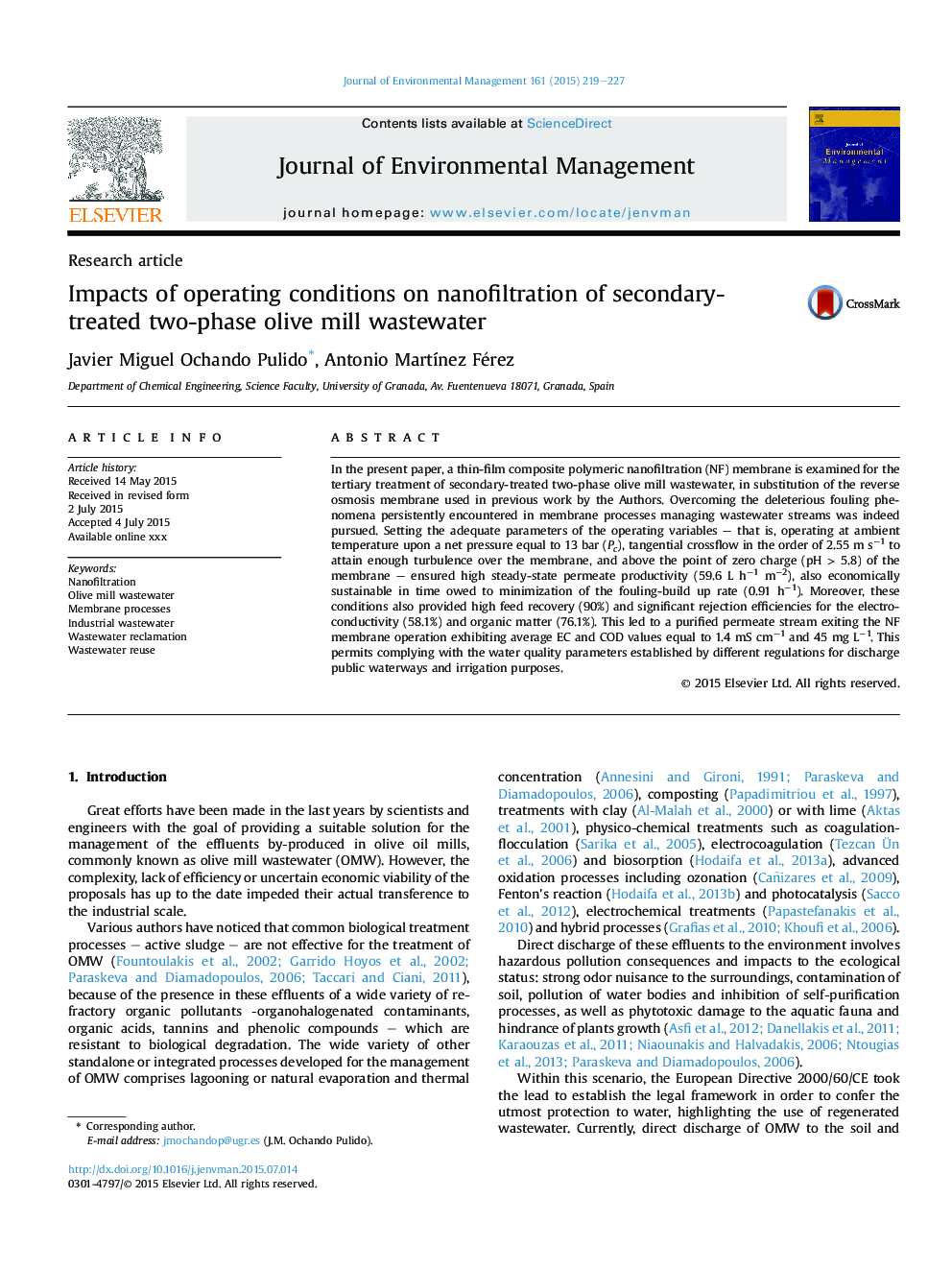| Article ID | Journal | Published Year | Pages | File Type |
|---|---|---|---|---|
| 7481721 | Journal of Environmental Management | 2015 | 9 Pages |
Abstract
In the present paper, a thin-film composite polymeric nanofiltration (NF) membrane is examined for the tertiary treatment of secondary-treated two-phase olive mill wastewater, in substitution of the reverse osmosis membrane used in previous work by the Authors. Overcoming the deleterious fouling phenomena persistently encountered in membrane processes managing wastewater streams was indeed pursued. Setting the adequate parameters of the operating variables - that is, operating at ambient temperature upon a net pressure equal to 13 bar (Pc), tangential crossflow in the order of 2.55 m sâ1 to attain enough turbulence over the membrane, and above the point of zero charge (pH > 5.8) of the membrane - ensured high steady-state permeate productivity (59.6 L hâ1 mâ2), also economically sustainable in time owed to minimization of the fouling-build up rate (0.91 hâ1). Moreover, these conditions also provided high feed recovery (90%) and significant rejection efficiencies for the electroconductivity (58.1%) and organic matter (76.1%). This led to a purified permeate stream exiting the NF membrane operation exhibiting average EC and COD values equal to 1.4 mS cmâ1 and 45 mg Lâ1. This permits complying with the water quality parameters established by different regulations for discharge public waterways and irrigation purposes.
Keywords
Related Topics
Physical Sciences and Engineering
Energy
Renewable Energy, Sustainability and the Environment
Authors
Javier Miguel Ochando Pulido, Antonio MartÃnez Férez,
